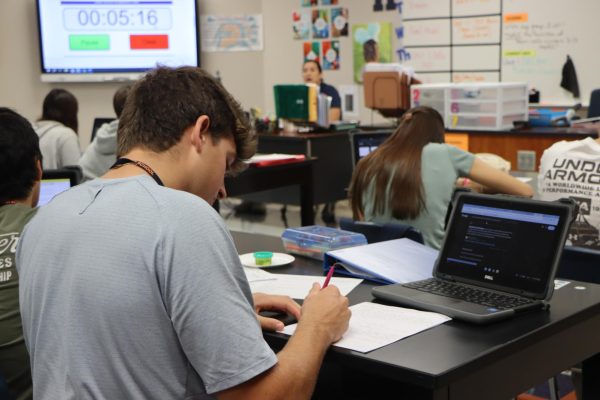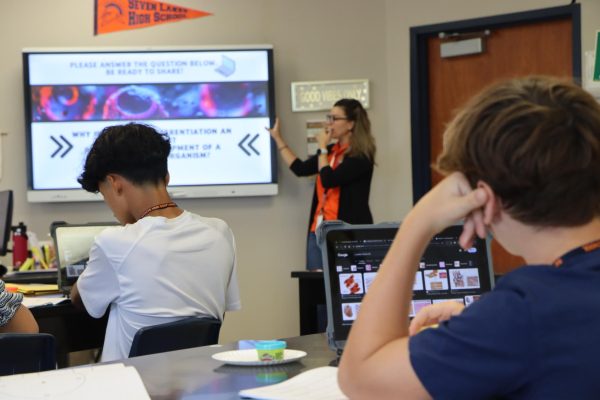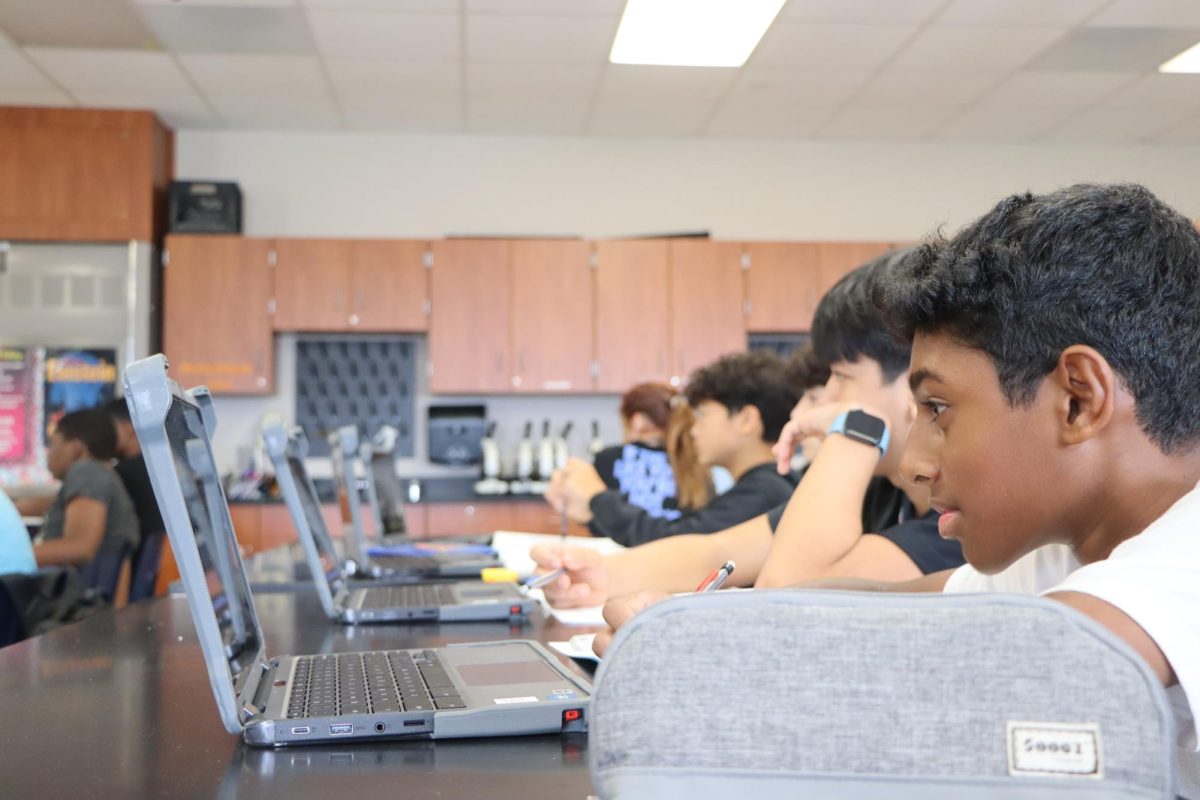“It’s a step forward, and a step towards digitized, efficient learning,” Principal Kerri Finnesand said.
As the 2024-2025 school year begins, the district has implemented a polarizing new policy–1:1 chromebooks. With technology becoming increasingly integrated in school curriculums, it begs the question: how do we maintain a balance between digital and traditional styles of education? Furthermore, how does this shift impact students and faculty?
“It’s interesting to implement this policy as someone who was not a digital native and then working with kids who are digital natives,” Chemistry teacher Sadaf Snyder said.
While it’s difficult to predict exactly how making classwork more digital is going to impact the future of school curriculums, there will be a balance. Not every class can rely on technology, and if they did it, would likely be disadvantageous to student learning. Most STEM classes, such as math, science, and physics, rely on seeing a student’s work to maximize points and feedback. This being said, school work will never go completely digital.
“The idea is that we make sure that we are using technology in a way to help you guys learn because that’s what you know,” Snyder said. “As a teacher I am kind of retraining myself on what works and what doesn’t for students.”

Katy ISD is not the only school district in Texas that has banned cellphones in favor of one-to-one technology. In fact, this is a policy that is sweeping the nation and taking over many school districts. As technology is already embedded into society, many argue that students would be more engaged with a technology-integrated course plan.
“I’ve noticed that my grades have increased more because of the Chromebook policy compared to my junior year,” senior Kanye Guion said.
A potential increase in grades won’t just be a coincidence. An article by David Hawridge, a pioneer in technology-based education, states that a ban on cellphones can increase learner engagement and focus. However, increased technology use in the classroom with the implementation of the Chromebooks can impact social development processes; so when implementing technology, balance is key.
“It takes time to transition things into a digital world that was once paper pencil,” Principal Finnesand said. “And I guess it’s meant to be a good balance too. Digital where it’s appropriate.”
From a student perspective, this shift is a double edged sword. Complaints about the Chromebooks lagging, the network being slow, and technical issues have been echoing throughout the hallways.
“Sometimes I have to wait for my Chromebook to initialize for minutes while class is starting, but I also understand that digital learning will take time,” junior NHS Secretary Anoushka Mathur said.
However, the Chromebook policy means less loose paper and none of the inconveniences a mainly paper curriculum had.
“I think it’s perfect because when you need to write, you can type, and it’s easier,” freshman Constanza Mazzocco said. “My hand doesn’t cramp up when I have to write a lot.”
Most importantly, it’s essential to consider the increasing digital divide. With standardized devices during the instructional period, there is a sense of privacy–no student knows who can and cannot afford a personal laptop.

“I do think that regardless of demographics, [the new Chromebook policy] allows everybody to be on the same playing field,” Principal Finnesand said.
According to the National Telecommunications and Information Administration, one in five U.S. Households don’t have technology or internet access at home.
“Digital equity is probably the most positive thing that came out of the one-to-one,” Principal Finnesand said. “It separates people that can have those resources and people that would struggle to access those resources.”



